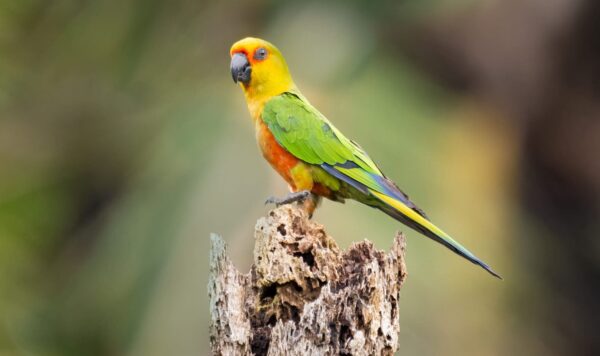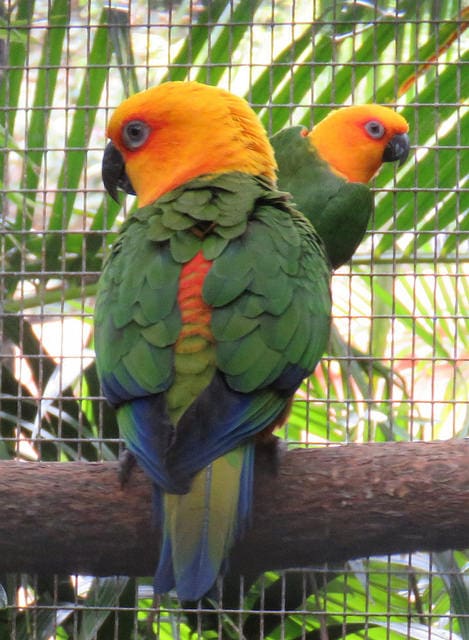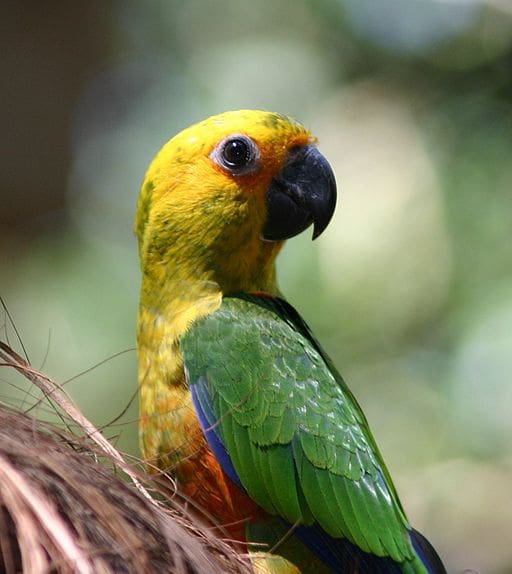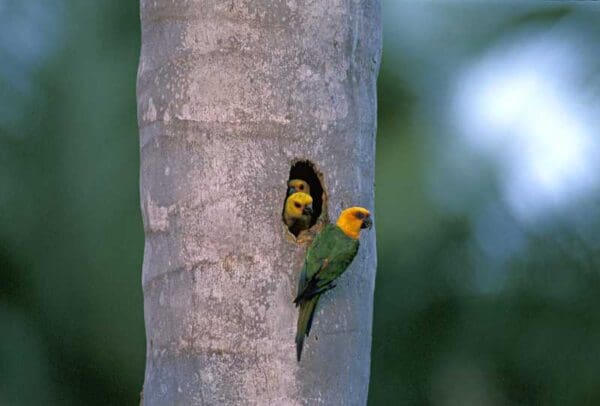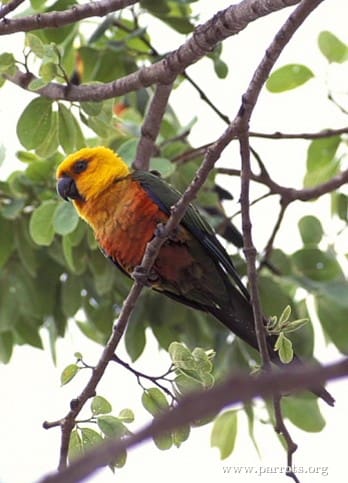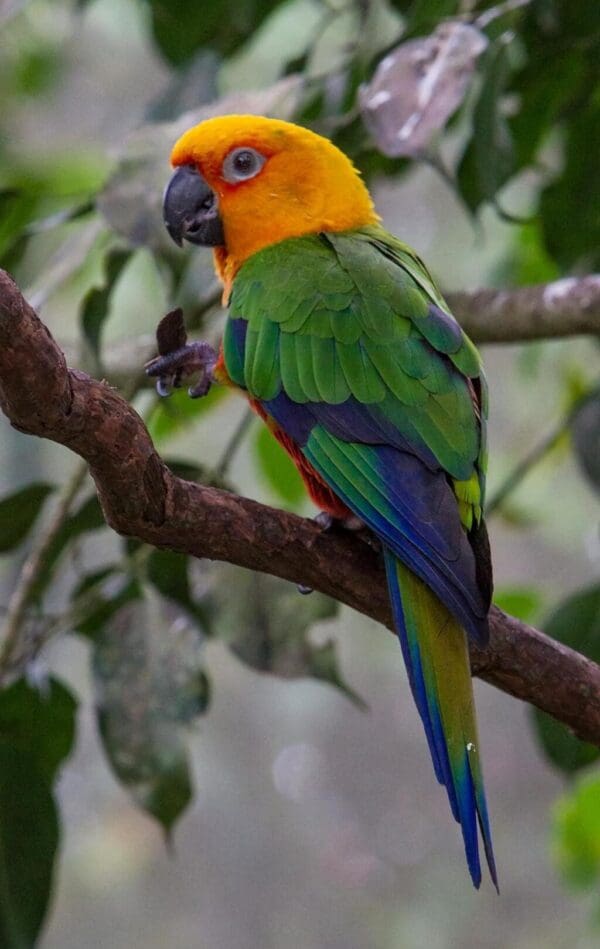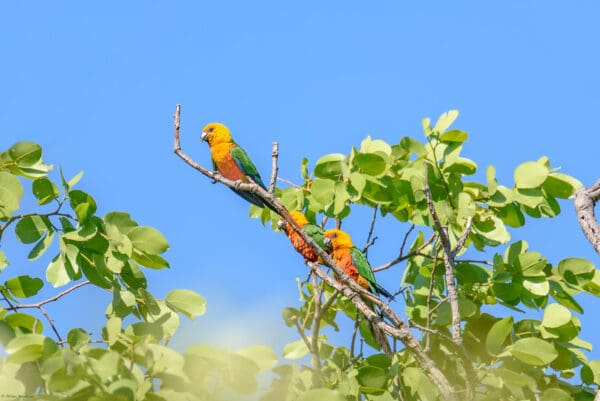Jandaya Conure
Also known as:
Jendaya Conure, Jenday Conure, Yellow-headed Conure or Parakeet, Flaming Parakeet
Also known as:
Jendaya Conure, Jenday Conure, Yellow-headed Conure or Parakeet, Flaming Parakeet
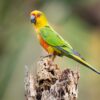
![© Florin Feneru [CC BY-SA 2.0] via Flickr Jandaya Conures perch in an enclosure](https://parrots.org/wp-content/uploads/2023/01/wpt_Jandaya-Conure_1319-9-100x100.jpg)
![© Charlesjsharp [CC BY-SA 3.0] via Wikimedia Commons A wild juvenile Jandaya Conure perches on a palm](https://parrots.org/wp-content/uploads/2023/01/wpt_Jandaya-Conure_1319-4-100x100.jpg)
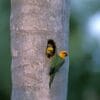
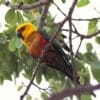
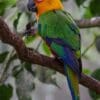
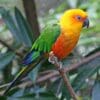
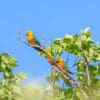
DID YOU KNOW?
The word Jandaya is taken from the South American indigenous name for this bird.

Aratinga

jandaya
Size:
30 cm (11.7 in)
Weight:
125-140 g (4.3-4.9 oz)
Subspecies including nominate:
one
Colour Adult:
Both adults yellow head and neck washed with orange on face; olive/green mantle and scapulars; green back and rump, the feathers margined with red; orange/red breast, abdomen and underwing coverts; green upper wing coverts; olive/green tail with dark blue tip. Beak black. Eye ring bare and grey or white. Eye brown.
Colour Juvenile:
As in adults but head and neck paler with green specks; orange on breast and abdomen paler. Eye ring bare and white. Eye brown.
Call:
Calls are described as screeching, loud and metallic; last note in the series is higher pitched in captivity.
More Information:
Content Sources:
CITES
BirdLife International
Cornell Lab of Ornithology/Birds of the World
Parrots: A Guide to Parrots of the World, Juniper and Parr, 1998
Parrots of the World, Forshaw and Cooper, 1977. 2010 edition
Parrots of the World, Forshaw, 2006.
Parrots in Aviculture, Low, 1992.
A Guide to Popular Conures, Dorge and Sibley, 2001.
Captive Status:
Common in US, less so elsewhere.
Longevity:
20+ yrs
Housing:
Aviary or suspended enclosure minimum length 2-3 m (6.5-9.8 ft).
Diet:
Cooked beans and pulses, such as butterbeans and mung beans; boiled maize; dry, soaked or sprouted sunflower seed; fruit such as: apple, pear, orange, banana; rearing food made from: hard boiled egg and carrot, ground up into a crumbly consistency; vegetables such as: carrot, celery, green beans and peas in the pod, fresh corn; spray millet; complete pellet.
Enrichment:
Bathing; provide lots of toys – bird-safe chewable wooden or vegetable tanned leather toys, swings, ladders, foraging toys and branches.
Nest Box Size:
Vertical box 12″ x 12″ x 22″ (30.5 cm x 30.5 cm x 55.9 cm).
Clutch Size:
3-6
Fledging Age:
8-9 weeks
Hatch Weight:
—
Peak Weight:
—
Weaning Weight:
—
World Population:
Unknown; described as rare but population stable.
IUCN Red List Status:
Least Concern
CITES Listing:
Appendix II
Threat Summary:
Relatively common throughout range, however, the effects of trade are poorly understood even though this is one of the most prized of South American parrots. It is suspected that there are high levels of smuggling to SE Asia.
Range:
Found in NE Brazil, from SE Para and near São Luís, Maranhão, east to Rio Grande do Norte and south to Alagoas, N Bahia and E Goiás; introduced at Belém, Pará.
Habitat:
Occurs in deciduous woodland, cerrado, scrub and areas cleared of wet forest. Also found at edge of humid forest and caatinga. Occasional visitor to farmland and pasture areas.
Wild Diet:
Feeds on fruits of Melastomataceae, mango (Mangifera indica), caranã (Mauritia huebneri) and various Cecropia, seed, and cultivated maize and rice.
Ecology and Behaviour:
Usually seen in flocks of a dozen or so birds. Nests in cavity in tree at least 15 m (50 ft) from the ground. Will fly long distances between suitable habitats.
Clutch and Egg Size:
3-6 rounded eggs, 28.5 x 22.5 mm (1.1 x 0.9 in).
Breeding Season:
August-December; nests are in tree hollows.
Related Links:
—
